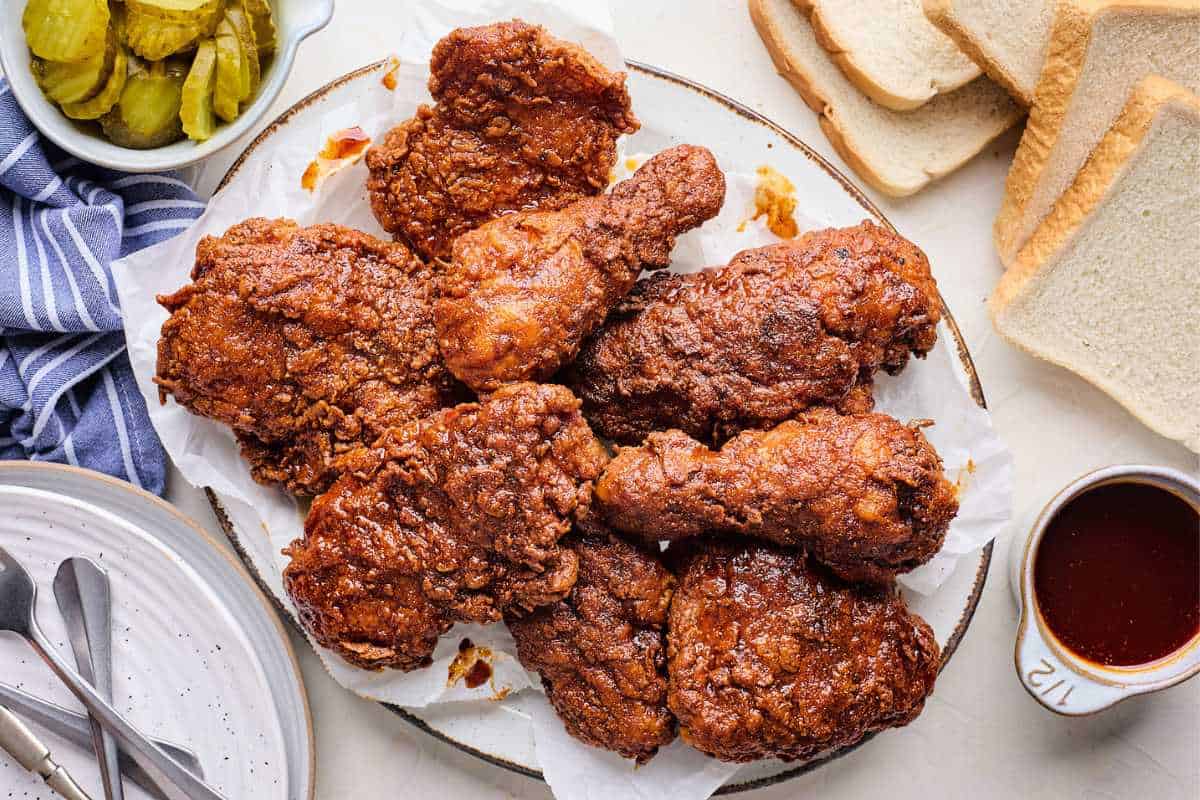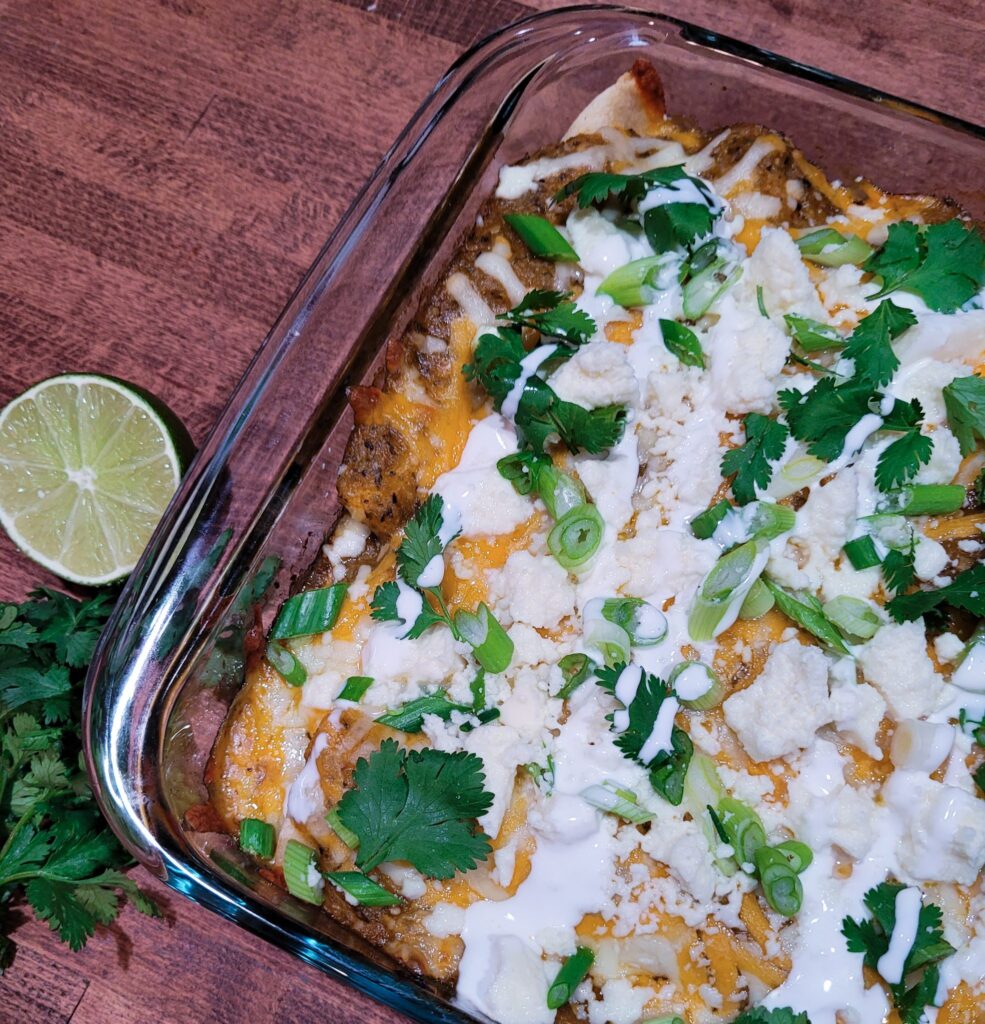Hey there, spice enthusiasts! Today, we're diving into the fiery world of spices: specifically, we are looking at chili powder vs. cayenne pepper. These two pantry staples might seem similar at first glance, but understanding their differences can really spice up your cooking game. Let's break it down.
As an Amazon Associate and affiliate marketer, I earn from qualifying purchases.

Jump to:
- What is Chili Powder?
- What is Cayenne?
- Key Differences Between Chili Powder and Cayenne
- What's In Chili Powder?
- What's In Cayenne Pepper?
- Best Uses for Chili Powder
- Best Uses for Cayenne
- Substitution Tips and Considerations
- Chili Powder Substitutes
- Cayenne Pepper Substitutes
- Chili Powder Vs. Cayenne: Conclusion
- Additional Resources
What is Chili Powder?
First up, let's talk chili powder. This flavorful blend is a spice blend for anyone who loves to add a kick to their dishes. Typically made from a mix of dried chili peppers (like chipotle peppers and ancho chiles), along with other spices, chili powder brings depth and complexity to your recipes. Plus, it comes in a range of heat levels, so you can customize the spice to suit your taste buds.
What is Cayenne?
Now, onto cayenne powder. This potent pepper packs a punch, known for its intense heat and vibrant red color. Originating from South America, cayenne pepper is ground from dried peppers and is beloved for its fiery flavor. It's a staple in many cuisines around the world, adding heat to everything from curries to cocktails.

Key Differences Between Chili Powder and Cayenne
So, what sets chili powder and cayenne apart? Well, for starters, their compositions are different. While chili powder is a blend of spices, the key ingredient for cayenne is pure ground chili pepper. This means that cayenne brings the heat of hot peppers without any additional spices muddying the waters.
In terms of heat level, cayenne takes the crown. It's significantly spicier than most chili powders, so a little goes a long way. Chili powder, on the other hand, offers more nuanced flavor profiles, ranging from smoky to sweet, depending on the blend. If you are looking for a milder, smoky flavor, chili powder is the way to go.
Let's delve deeper into the composition of chili powder vs. cayenne powder to understand what gives them their distinctive flavors and heat levels.

What's In Chili Powder?
Chili powder is essentially a blend of ground dried chili peppers along with other spices. The specific ingredients can vary depending on the recipe or brand, but common additions include cumin, garlic powder, onion powder, paprika, oregano, and sometimes salt.
- Chili Peppers: These are the star of the show. Various types of chili peppers may be used, such as ancho, pasilla, chipotle, or cayenne peppers. Each variety contributes its own unique flavor profile and heat level to the blend.
- Cumin: Cumin adds warmth and depth to chili powder with its earthy, slightly nutty flavor. It's a staple in many spice blends and is particularly prominent in Tex-Mex cuisine.
- Garlic Powder: Providing a savory, aromatic element, garlic powder enhances the overall flavor profile of chili powder. It adds complexity without overpowering the other spices.
- Onion Powder: Like garlic powder, onion powder adds aromatic value to the flavor profile of chili powder.
- Paprika: This mild, sweet pepper powder lends color and a subtle sweetness to chili powder blends. It can range from mild to hot depending on the type used. Sweet paprika adds the subtle sweetness, while smoked paprika adds a smoky note.
- Oregano: Oregano contributes a hint of herbal freshness and complements the other spices in the blend. It's a common addition, especially in Mexican-inspired chili powders.
- Salt (Optional): Some commercial chili powder blends may include salt as an ingredient. However, if you're making your own chili powder at home, you can adjust the salt level according to your taste preferences.

What's In Cayenne Pepper?
Cayenne pepper is made from ground dried cayenne chili peppers (of the capsicum annuum family), which are known for their intense heat and vibrant red color. Unlike chili powder, cayenne powder typically doesn't contain any additional spices or flavorings, allowing the pure heat of the peppers to shine through.
- Cayenne Peppers: These slender, wrinkled peppers pack a fiery punch. They're relatively small but mighty, ranking high on the Scoville scale, which measures the heat of chili peppers. The level of heat can vary depending on factors such as growing conditions and processing methods.
- Pure Heat: Unlike chili powder blends, which may have a range of flavors and heat levels, cayenne powder is all about the heat. It's a go-to ingredient for adding fiery intensity to dishes without altering their flavor profile significantly.
While both chili powder and cayenne pepper bring heat to the table, their compositions and flavor profiles vary, offering cooks a diverse range of options when it comes to spicing up their dishes. Whether you're looking for complex flavors or pure heat, there's a spice for every palate. The best news: if you don't already have them in your pantry, both of these spices are found in grocery stores around the world!

Best Uses for Chili Powder
Now, let's talk about how to put that chili powder to good use. This versatile spice is a must-have for Latin American inspired Tex-Mex dishes like chili con carne and tacos. It also adds depth to sauces, soups, and stews, bringing warmth and complexity to every bite. Plus, it's perfect for seasoning meats before grilling or roasting.
Here are some of our favorite recipes that use chili powder:



Best Uses for Cayenne
As for cayenne, think of it as your secret weapon for adding heat to any dish. Whether you're whipping up a curry or marinating chicken, a pinch of cayenne can take your recipe to the next level. It's also a popular choice for spice rubs, lending a fiery kick to meats and veggies alike. And hey, did you know that cayenne pepper is packed with health benefits too? It's been linked to everything from having antioxidant properties, boosting metabolism, and improving digestion.
Below are some of the best cayenne pepper dishes:



Substitution Tips and Considerations
Now, what if you find yourself in a pinch without one of these spices? Don't worry, you've got options. If a recipe calls for chili powder but you only have cayenne on hand, just use a smaller amount and adjust to taste. Likewise, if you're out of cayenne, you can substitute with a milder chili powder, though you might miss out on that intense heat. What you miss in heat, however, you make up with the lovely earthy flavor of chili powder.
There are some major differences between chili powder vs. cayenne, especially in heat level. So, be sure to add a little at a time and adjust to your liking.

Chili Powder Substitutes
Here are some ingredients that can act as a chili powder substitute:
Red Pepper Flakes: Crushed red pepper flakes are another good substitute for chili powder, especially if you're looking for texture as well as heat. They're made from dried, crushed chili peppers and can add a similar level of spiciness to your dishes. Keep in mind that the texture may be different from using powder, so adjust accordingly.
Paprika Powder: If you're out of chili powder but still want to add color and a mild, sweet flavor to your dish, paprika can work as a substitute. It won't provide the same level of heat, so you may want to add a pinch of cayenne pepper or red pepper flakes to dial up the spiciness if desired.
Hot Sauce: Depending on the recipe, you can also use hot sauce as a substitute for chili powder. Look for a hot sauce with a similar flavor profile to the chili powder you're replacing. Keep in mind that hot sauce will add liquid to your dish, so adjust other liquid ingredients accordingly.
Curry Powder: In some recipes, especially those with a strong emphasis on spices and flavors, curry powder can work as a substitute for chili powder. It typically contains a mix of spices including cumin, coriander, turmeric, and ginger, which can add depth and complexity to your dish.
When substituting chili powder, it's essential to consider the flavor profile and heat level you're aiming for in your dish, and adjust the substitute accordingly. Start with a small amount and taste as you go to ensure the flavors are balanced to your liking.

Cayenne Pepper Substitutes
If you find yourself without cayenne pepper in your spice rack, there are several alternatives you can use to add heat to your dishes. Here are some common substitutes:
Crushed Red Pepper Flakes: Crushed red pepper flakes are made from dried and crushed hot chili peppers, similar to cayenne pepper. They provide a similar level of spiciness and can be used in equal amounts as a substitute for cayenne pepper. Keep in mind that they may have a slightly different texture, so adjust accordingly.
Paprika: Paprika is made from ground dried peppers, but it is milder than cayenne pepper in terms of heat. However, it can still add color and a subtle flavor to your dish. If using paprika as a substitute for cayenne pepper, consider adding a pinch of crushed red pepper flakes or a dash of hot sauce to increase the heat level.
Hot Sauce: Hot sauce is another option for adding heat to your dishes. Depending on the type of hot sauce you use, it can range from mild to extremely spicy. Adjust the amount according to your preference and the desired level of heat in your recipe.
Black Pepper: While black pepper doesn't provide the same type of heat as cayenne pepper, it can still add a mild spiciness to your dishes. Use it in combination with other substitutes, such as crushed red pepper flakes or hot sauce, to achieve the desired level of heat.
Jalapeño Peppers: Fresh or pickled jalapeño peppers can be used as a substitute for cayenne pepper in certain dishes. Keep in mind that fresh jalapeños will have a different flavor profile and texture, so adjust your recipe accordingly.
When substituting cayenne pepper, consider the flavor profile and heat level you're aiming for in your dish, and adjust the substitute accordingly.

Chili Powder Vs. Cayenne: Conclusion
In conclusion, chili powder and cayenne may share a love for all things spicy, but they each bring their own unique flavors and heat levels to the table. By understanding the differences between chili powder vs. cayenne pepper, you'll be well-equipped to elevate your cooking and impress your taste buds. So go ahead, spice things up and unleash your culinary creativity!
Additional Resources
Looking to learn more about chili powder, cayenne, and spice blending? Check out these resources for further reading:
- 7 Classic Spice Blends You Should Use More Often - Food and Wine
- 6 Potential Health Benefits of Cayenne Pepper - Healthline
There you have it! Now you know the differences between chili powder vs. cayenne pepper. It is time to spice up your cooking adventures and let your taste buds do the talking. Happy cooking!


Leave a Reply